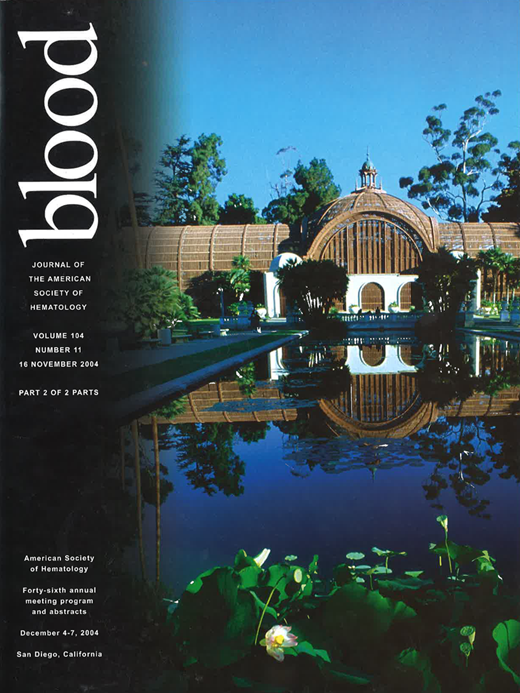Abstract
Prolonging event-free survival of AML with autologous activated immune cells is a promising concept. GD-T cells are a rare circulating lymphocyte population (1%) and a component of the innate immune system capable of exerting anti-neoplastic activity. Their role as potential anti-cancer immune effector cells deserves further exploration. It is noteworthy that GD-T cells are over-represented in reactive regions surrounding melanoma lesions. While patients with an accumulation of GD-T cells showed a survival benefit over those who did not, such increases were not present in patients with metastatic disease and high tumor cell burden (
Bachelez, J. Invest. Dermatol. 98:369,1992
). Little is known about the role of GD-T cells as immuno-effectors, their absolute numbers in peripheral blood or the feasibility of purifying functional GD-T cells from patients with AML. We are interested in testing the clinical feasibility of using GD-T cells freshly purified from PB against minimal residual disease in AML. As a first step towards achieving this goal, we compared circulating GD-T cell levels sequentially in 33 AML patients with 20 healthy adult volunteers. We used ultra-low volume multi-color flow-cytometry and microbeads to measure absolute numbers of GD-T cells in PB. Functional studies were done by the chromium release assay and single-cell intra-cellular interferon-gamma detection. We observed that AML patients with a high leukemic blast cell burden (e.g. prior to chemotherapy) had marginally decreased GD-T cell levels compared with healthy controls: median 38/μl, Q1-Q3, 27–86/μl, versus median 83/μl, Q1-Q3, 45–122/μl, respectively, p= 0.051. We re-examined the AML patients at several time points after induction therapy and observed significantly increased numbers of GD-T cells in patients with lower but detectable residual disease (either molecular maker positive or borderline bone marrow blast infiltration by morphology) compared to patients with persistently high blast cell burden: median 105/μl, Q1-Q3, 105–133/μl versus median, 7/μl, Q1-Q3, 6–15/μl; p=0.008. Patients with residual disease also showed significantly higher numbers of absolute GD-T cells per microliter blood compared to those retested after they had achieved complete remission (CR); p=0.0025. In CR, GD-T cell counts remained lower than those of healthy individuals: median 33/μl, Q1-Q3, 22–35/μl versus median 83/μl, Q1-Q3, 45–122/μl; p=0.030. Interestingly, we found a sharp increase (on average, 4.9-fold higher than values obtained in CR) in GD-T levels at the time of very early morphologic (n=3) or molecular relapse (n=2). Hence, we were interested in studying the functional properties of the GD-T cells from AML patients. We were able to isolate functional GD-T cells from the PB of patients with AML in CR-1 in sufficient numbers and purity to assay for interferon-gamma and found that similar numbers of GD-T cells expressed the Th1 cytokine compared with healthy controls: 84% versus 93% of all GD-T cells, respectively. We also showed that GD-T cells were able to kill leukemic target cells (AML-OCI2) in vitro more efficiently than CD3+ T cells. Our data suggest that further studies to investigate the potential therapeutic role of autologous GD-T cells in patients with AML in CR are warranted.Author notes
Corresponding author
2005, The American Society of Hematology
2004

